REFERENCES
BASSON, A. H. and OCONNOR, D. J., Introduction to Symbolic Logic , 2nd Ed., London, University Tutorial Press, 1957.
BERNAYS, PAUL, A System of Axiomatic Set Theory, Journal of Symbolic Logic , Vol. 2 (1937), pp. 6577; Vol. 6 (1941), pp. 117; Vol. 7 (1942), pp. 6589 and 133145; Vol. 8 (1943), pp. 89106; Vol. 13 (1948), pp. 6579.
BERNAYS, PAUL and FRAENKEL, A. A., Axiomatic Set Theory , Amsterdam, North-Holland, 1958.
FRAENKEL, A. A., and BAR-HILLEL, Y., Foundations of Set Theory , Amsterdam, North-Holland, 1958.
HALMOS, P. R., Naive Set Theory , Princeton, Van Nostrand, 1960.
HEMPEL, CARL G., On the Nature of Mathematical Truth. In: FEIGL, H. and SELLARS, W., Readings in Philosophical Analysis , New York, Appleton-Century, 1949; pp. 222237.
KERSHNER, R. B. and WILCOX, L. R., The Anatomy of Mathematics , New York, Ronald Press, 1950.
LANGER, SUSANNE K., An Introduction to Symbolic Logic (2nd Revised Ed.), New York, Dover Press, 1953.
QUINE, W. VAN ORMAN, Mathematical Logic (Revised Ed.), Cambridge, Harvard University Press, 1951.
ROSSER, J. B., Logic for Mathematicians , New York, McGraw-Hill, 1953.
RUSSELL, BERTRAND, Introduction to Mathematical Philosophy , London, Allen & Unwin, 1948.
SUPPES, PATRICK, Introduction to Logic , New York, Van Nostrand, 1957.
SUPPES, P., Axiomatic Set Theory , Princeton, Van Nostrand, 1960.
TARSKI, ALFRED, Introduction to Logic , New York, O.U.P., 1951.
WILDER, RAYMOND, L., Introduction to the Foundations of Mathematics , New York, Wiley, 1952.
SECTION 1
THE BASIC LOGICAL CONCEPTS
1.1. Introduction
THE symbolism of elementary logic is both simple and efficient. By its means elegant and powerful logical calculi can be set up for the purpose of formalizing a scientific theory. But familiarity with the techniques involved in setting up these logical calculi is not essential to an understanding of the present text. All that is required is an understanding of the meaning and interrelation of the following symbols:
,  , v, , , ( x ), ( x ),
, v, , , ( x ), ( x ),
All of them translate straightforwardly into a familiar word or phrase of ordinary speech. But they are not mere shorthand symbols. For each differs from its counterpart in ordinary speech in virtue of the fact that it is precisely defined; whereas the words of ordinary speech are not. We shall formulate, explain and illustrate the definition of each in turn. In doing so we shall make use of the two groups of letters: x,y,z,w, and: P,Q,R,S, which we call variables . They are variables in the sense that they keep a place open in a formula, just as the x in x 2 keeps a place open for any number we may wish to put there. The type of entity that may be put in place of our variables will be called the range of values of those variables. In fact the range of values of the variables x,y,z,w, is any individual object of any kind, and the range of values of the variables P,Q,R,S, is any proposition. Finally we shall use the notation T , to mean any true proposition, and F to mean any false proposition, and we shall refer to the symbols listed above as logical constants .
1.2. The Logical Constants
1.21. Member of
When the Greek letter occurs between two variables as in:
x y
the range of values of the variable y is, thereby, confined to classes. Thus if the value John Doe is given to the variable x and the value mortals to the variable y, the result is the formula:
John Doe mortals
which may be read:
John Doe is a member of the class Mortals
Again if we write Nn as the name of the class Natural Numbers, then the formula:
(I)
x Nn
gives rise to the following formulae, each of which represents a true statement:
(II)
0 Nn 1 Nn
2 Nn
etc.
Any formula of the type (I) above will be called a propositional function , where this term is intended to mean: an expression which becomes a proposition (true or false) when values are assigned (suitably) to all the variables (of the sort: x,y,z ) occurring in it. The propositional function is the most important among the various types of formula with which we shall be concerned in Part II. The word formula, however, will be used to refer quite generally to: either a propositional variable (e.g. P,Q etc.) standing alone, or a propositional function, or any combination of these properly constructed by means of the logical constants or, finally, a symbolized proposition (e.g. (II) above). In this connection we shall, for convenience, use the phrase formula which represents a true (false) proposition in the following way. A formula may represent a true (false) proposition either directly (as in the case of a symbolized proposition), or indirectly (as in the case of a formula containing variables which is assumed, for the sake of a particular argument, to give rise to some particular but unspecified true (false) proposition, by a suitable assignment of values to the variables).
1.22. Not
We use the sign (read tilde) immediately to the left of a formula. It is defined by a matrix which shows whether a formula having this sign as its first symbol, represents a true or a false proposition. The matrix shows this by reference to the formula to which the sign is adjoined:
Thus if the sign occurs against a formula representing a true proposition, the result is a formula representing a false proposition (and vice versa) ; so that if it occurs against a propositional variable P which has a true proposition as its intended value, the result will be a formula representing a false proposition (and vice versa). Similarly, if it occurs against a propositional function having a true proposition as its intended value, the result will be a formula representing a false proposition (and vice versa). For example, if G is used to name the class of Greeks, then the formula:
x G
gives rise to the false proposition:
(III)
Mz G
if we are using Mz to name, say, Mozart. Therefore, by the above matrix, if we substitute (III) for P in the formula ~P , the result is a formula representing a true proposition, namely:
(Mz G)
(i.e. Mozart is not a Greek)
Again, if we substitute (0 Nn) for P in the formula P , the result is the following true symbolized proposition:
((0 Nn))
(i.e. 0 is not not a member of the class Natural Numbers).
1.23. And
We use the sign (read dot) between formulae, and it is defined by the following matrix:
| P | Q | P  Q Q |
|---|
| T | T | T |
| F | T | F |
| T | F | F |
| F | F | F |
The matrix shows that if dot occurs between two formulae each of which represents a true proposition, the result is a formula representing a true proposition. In every other possible case the result is shown to be a formula representing a false proposition. For example, using the same name symbols as before, if we substitute (0 Nn) for P , and (Mz G) for Q in the formula P Q then by the above matrix the result is the false proposition:
(0 Nn) 

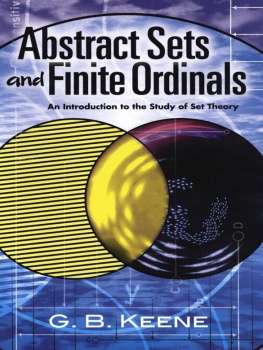

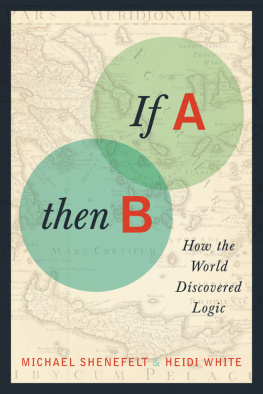
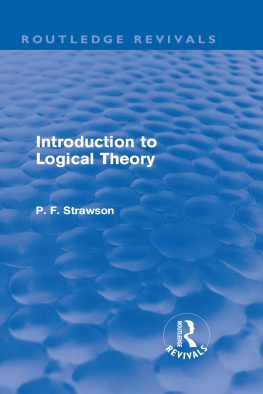
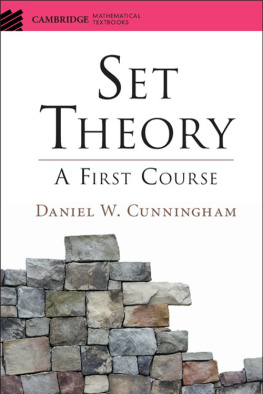
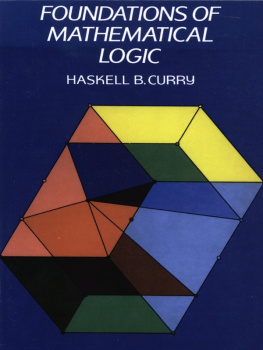

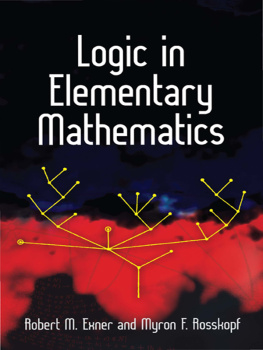

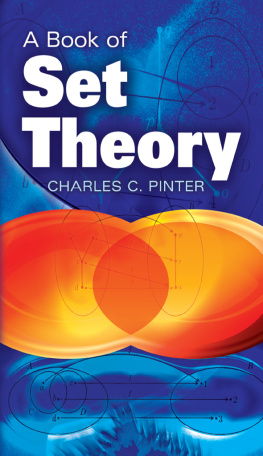
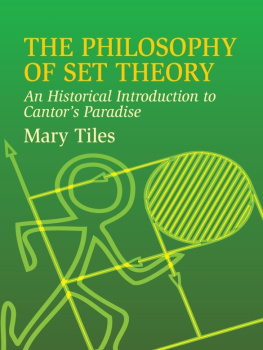
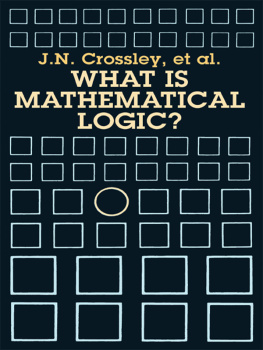
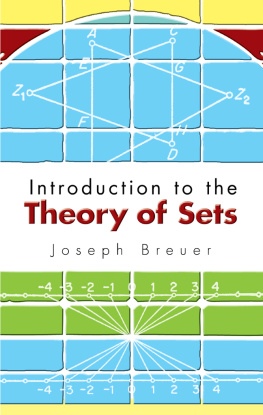
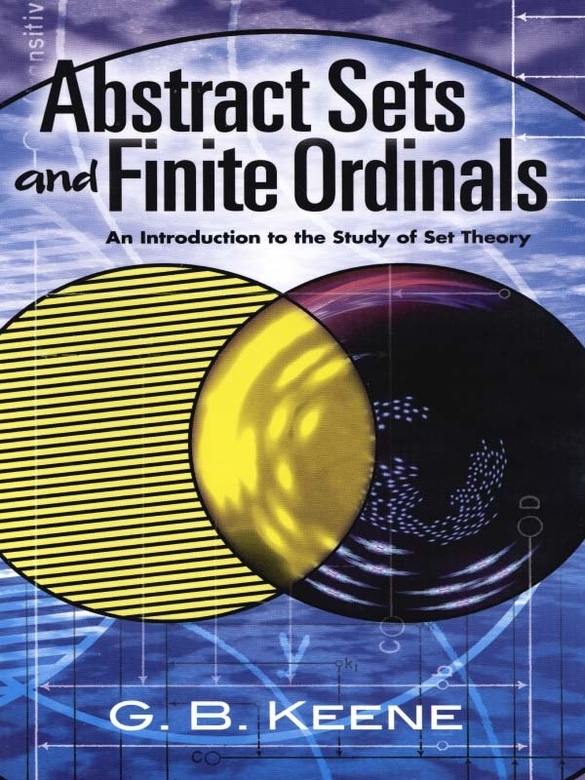
 , v, , , ( x ), ( x ),
, v, , , ( x ), ( x ),